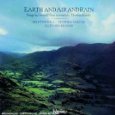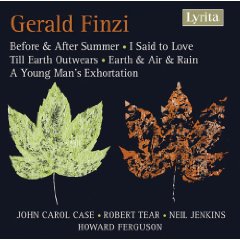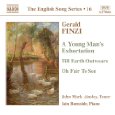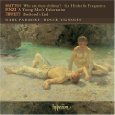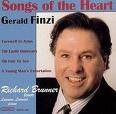The Comet at Yell'ham
- Musical Analysis Section
- Audio Recordings Section
- Unpublished Analysis Excerpts
- Van der Watt - The Songs of Gerald Finzi (1901-1956) To Poems by Thomas Hardy
- Carlisle - Gerald Finzi: A performance Analysis of A Young Man's Exhortation and Till Earth Outwears, Two Works for High Voice and
- Denning - A Discussion and Analysis of Songs for the Tenor Voice Composed by Gerald Finzi with Texts by Thomas Hardy
- Rogers - A Stylistic Analysis of A Young Man's Exhortation, Opus 14, by Gerald Finzi to words by Thomas Hardy
- Bray - An Analysis of Gerald Finzi's "A Young Man's Exhortation"
- John Keston - Two Gentlemen from Wessex, The Relationship of Thomas Hardy's Poetry to Gerald Finzi's Music
Poet: Thomas Hardy
Date of poem: (undated)
Publication date: Within the collection: Poems of the Past and the Present (1902)
Publisher: Macmillan Publishing Company
Collection: Poems of the Past and the Present
History of Poem: Richard Purdy writes in his bibliographical study of Thomas Hardy and more specifically The Comet at Yalbury or Yell'ham: "Hardy wrote of this poem, [The comet] appeared I think, in 1858 or 1859 - a very large one - and I remember standing and looking at it as described.' In his final revision the title was shortened to 'The Comet at Yell'ham'."
(Purdy, 115)
James Osler Bailey writes in his book about the poetry of Thomas Hardy: "THE COMET AT YELL'HAM is based on an actual experience. When Dr. T. Herbert Warren quoted the poem in a speech, Hardy wrote to him on October 24, 1909: 'I have read the proof of your interesting & able address at the celebration of the Jubilee of the Oxford Museum, & am much honoured by your quoting my little poem about the comet. It appeared, I think, in 1858 or 1859 - a very large one & I remember standing and looking at it as described.' (In the Colby College Library) The comet was Encke's Comet, brilliant in England in September and October, 1858. According to the poem, Hardy watched the comet from the top of Yellowham Hill. the 'sweet form' who was with him may have been either a boyhood sweetheart or his mother or sister."
(Bailey, 168)
F. B. Pinion records that the "sweet form" Hardy speaks of in the poem may be Hardy's sister Mary. (PInion, 55)
Poem
| 1 | IT bends far over Yell’ham Plain, | a |
| 2 | And we, from Yell’ham Height, | b |
| 3 | Stand and regard its fiery train, | a |
| 4 | So soon to swim from sight. | b |
| 5 | It will return long years hence, when | c |
| 6 | As now its strange swift shine | d |
| 7 | Will fall on Yell’ham; but not then | c |
| 8 | On that sweet form of thine. | d |
Content/Meaning of the Poem:
The following is offered as a possible translation or more contemporary meaning behind the text:
It crosses the sky above the Yell'ham Plain,
We look on from Yell'ham Height,
Standing and admiring the size of the comet,
It will be gone from our sight, quickly.
It will come back a long time from now, and when it does
It will shine but fleetingly
It will be seen from Yell'ham; but
You will be gone.
For additional comments as to possible meaning of the text please refer to: Content/Meaning - Van der Watt.
Speaker: The poet, Thomas Hardy.
Setting: Yellowham Hill is probably the best location for the setting according to James Osler Bailey. (Bailey, 44)
Purpose: To remind one that life is short.
Idea or theme: A common theme of Hardy's in that time is fleeting; we are here today and gone tomorrow. Another theme that is also present is that we are but a speck of dust in comparison to the universe.
Style: Gerhardus Daniël Van der Watt writes in his dissertation about the style of the poem: "The poem is written in a simple lyrical style with a typical pessimistic twist in the final one and a half lines." (Van der Watt, 111)
Form: Gerhardus Daniël Van der Watt describes the form of the poem as "two quatrains" with a "rounded rhyme scheme." He goes on to say the metre is primarily "iambic with a few irregularities" and additionally, the lines are somewhat "uneven." (Van der Watt, 111) To view Dr. Van der Watt's complete thoughts as to the form of the poem please refer to: Form - Van der Watt.
Not specifically on point as to form but nevertheless a valid point of view, Kenneth Marsden writes: "A persistent characteristic of [Hardy's] verse is the use of juxtaposition; an event, opinion or scene is given and is followed by another which contradicts or substantially modifies the first, for example, 'The Comet at Yell'ham'." Marsden goes on to say after listing several Hardy poems that also share this same characteristic form: "It is, in fact, a form in which many degrees of elaboration, and success, are possible."
(Marsden, 106-7)
Synthesis: In this poem we can imagine Hardy pondering the life of a comet. He may have taken note of the short time it took for the comet to cross the sky to that of the comets long life expectancy. The human life in comparison is relatively short and that seems to be the juxtaposition that Hardy employs in this poem. Hardy's penchant for reminding the reader that life is short is the theme and we find this also in his poem "Life Laughs Onward." The text in that poem repeatedly reminds the reader that when life is over you are soon forgotten. Even though Hardy doesn't seem to lecture the reader in this poem one can ponder as to whether or not he may want to remind human kind that their ego often needs to be put in cheque. For additional commentary please refer to: Synthesis - Van der Watt.
✦✼✦✼✦✼✦✼✦✼✦✼✦✼✦✼✦✼✦✼✦✼✦✼✦✼✦✼✦✼✦✼✦✼✦
Poems of the Past and the Present
- Collection of 99 poems written by Thomas Hardy.
- Published in November of 1901 by Harper and Brothers.
- Hardy's second collection of poems published.
"An anonymous reviewer of the volume for the Saturday Review called it a "grey book," but declared that every poem in the book had "something to say," even though it was sometimes said in a "slow, twisted, sometimes enigmatic manner." (Wright, 251)
"T. H. Warren, president of Magdalen College, Oxford, writing in The Spectator, suggested that poetry was not Hardy's "proper medium," and deplored his "morbid taste for the ghastly and the gruesome." (Wright, 251)
Gerald Finzi set the following poems within this collection:
- A Spot [titled by Finzi as: In Years Defaced] (Till Earth Outwears)
- At a Lunar Eclipse (Till Earth Outwears)
- The Comet at Yell'ham (A Young Man's Exhortation)
- I Need Not Go (I Said To Love)
- In Years Defaced (Till Earth Outwears)
- I Said to Love (I Said To Love)
- To Lizbie Browne (Earth and Air and Rain)
- The Self-Unseeing (Before and After Summer)
Helpful Links:
- Thomas Hardy Web site
- Project Gutenberg (e-text format of all poems within collection)
- Fullbooks.com (texts for all poems within collection)
✦✼✦✼✦✼✦✼✦✼✦✼✦✼✦✼✦✼✦✼✦✼✦✼✦✼✦✼✦✼✦✼✦✼✦
Musical Analysis
Composition date: 1927 (Banfield, 144)
Publication date: Copyright 1933 by Oxford University Press, London.
Copyright © assigned 1957 to Boosey & Co. Ltd. (Finzi, 148)
Publisher: Boosey & Hawkes - Distributed by Hal Leonard Corporation
Tonality: There is no key signature for this song and at times the piece is bitonal. Mark Carlisle in his dissertation describes the song section to section as to the use of tonality, harmony, texture and form with good detail. To view this portion of his dissertation please refer to: Tonality - Carlisle. The editor has placed a note at the bottom of the first page stating: "Accidentals only apply to the notes they precede."(Finzi, 148) For additional discussion about the tonality please refer to: Tonality - Van der Watt.
Transposition: Currently unavailable.
Duration: Approximately three minutes and seventeen seconds.
Meter: The song is driven by a strong quarter note pulse as Finzi has chosen to not include a meter signature. The lack of meter signature was not unusual for this time period but it was not often employed by Finzi. This song is more adventurous than most of Finzi's in several aspects especially when one considers the bi-tonal sections. For further information about the meter of the song please refer to: Metre - Van der Watt.
Tempo: The score indicates Lento quarter note equals C.42 at the beginning but Finzi does include some deviations. His first deviation is in the form of a tenuto at the end of the first system. Next, Finzi places a rallentando at the end of the third system and then returns to a tempo just after the beginning of the fourth system. He then asks the pianist to begin executing a ritardando near the end of the last system. The ritardando continues until the piece ends. The effect is one in which the comet seems to continue on out into space slowly leaving us behind.
For a additional information about the tempi within the song please refer to: Speed - Van der Watt.
Form: The form in which the song can best be described is through-composed. Finzi frequently uses this form more than any other. One possible reason for this may be he felt repetitive melodic material might detract from the text and that his style of writing incorporated writing small fragments from inspiration he garnered from the text. These fragments would then eventually lead him to a complete song once he was satisfied with the coupling. For additional information about the specific sections of the song and other information about the form please refer to: Structure - Van der Watt or Tonality/Form - Carlisle.
Rhythm: Finzi's choice of rhythms within this song are somewhat different than his standard idiomatic setting of the text. He intentionally lengthens some syllables with his choice of rhythms which was unusual for someone who seems to painstakingly set the text idiomatically. One has the idea that he was using longer note values on some of the text to portray the distance between the observer and the comet or at least this is a plausible explanation. For additional discussion about the rhythm and the rhythmic motifs of the song please refer to: Rhythm - Van der Watt.
The vocal line of the song was subjected to a rhythmic duration analysis. This was performed in order to ascertain the number of occurrences a specific rhythmic duration were used and to specify which phrase it occurred. For the results of this analysis please refer to: Rhythm Analysis.
Melody: The vocal line of the song was subjected to an interval analysis for the purpose of discovering the number of occurrences specific intervals were used and also to see the similarities if there were any between stanzas. Only intervals larger than a major second were accounted for in the interval analysis. The analysis discovered the number of ascending and descending intervals overall were quite similar. The ascending intervals totaling twelve and the descending eleven. For the sake of manageability the song was divided into two sections which are labelled as stanza one and two. The first stanza encompasses all the musical material from the beginning through the end of the fourth system. The second stanza includes the remaining material of the song. The total number of occurrences between the two phrases were again quite similar but when one looks at the specific intervals used the second phrase displays more larger intervals than the first. The ascending perfect fourth was used four times in the second phrase but in the first phrase it was used only once. The descending perfect fifth was used three times in the second phrase but only once in the first phrase. The first phrase possesses some additional single occurrences of other intervals as well. For example, the ascending minor sixth and descending octave only occur in the first phrase. The analysis gave further proof that the song is through-composed as was stated earlier. For additional information about the melodic material within the song please refer to: Melody - Van der Watt or Tonality/Melody - Carlisle. For a complete description of the results of the interval analysis please refer to: Interval Analysis.
Texture: Mark Carlisle in his description of the music found the texture alternated between homophonic and contrapuntal. Finzi often utilizes these two types of texture in his song writing and one can fathom his reasoning was to serve the text and not necessarily to be consistent with his choice of texture. One must also remember that Finzi was influenced by his study of counterpoint with Reginald Owen Morris and also his frequent home study of composition and this surely influenced his decisions about texture. One also may gather from his frequent use of fragments that texture was not a primary concern of his. For a brief description about the texture including a table outlining the types of texture and the percentage in which they were used please refer to: Texture - Van der Watt also if one wishes to read Dr. Carlisle full description of the music please refer to: Tonality/Texture - Carlisle.
Vocal Range: The vocal range spans an interval of a perfect eleventh. The lowest pitch is the D below middle C and the highest pitch is the G above middle C.
Tessitura: The tessitura spans one octave and lies between the F below middle C and the F above middle C. A pitch analysis was performed for the purpose of accurately determining the tessitura and for the complete results please refer to: Pitch Analysis.
Dynamic Range: The piano accompaniment is to be played very softly throughout the piece. Finzi does deviate from the extremely soft dynamics in almost each system of the song but never is a dynamic specifically indicated other than ppp and pp. The vocal line is asked to crescendo, decrescendo, and diminuendo but never is a specific dynamic given. One can imagine that Finzi was attempting to create an effect of "hushed awe" while commenting on the path of the comet. For further discussion about dynamics including a table listing where each dynamic is indicated within each stanza please refer to: Dynamics - Van der Watt.
Accompaniment: The accompaniment is moderately difficult to play primarily because of the lack of bar lines. There are also several occasions of ledger lines stacked five high at the beginning and end of the song. For specific information about the accompaniment please refer to: Accompaniment - Van der Watt.
Pedagogical Considerations for Voice Students and Instructors: A concern with this song for most will be managing the soft dynamics in the higher range. A heavier voice tenor will probably find this more difficult that lighter voices. The song is also unmetered which will require one to pay closer attention to the accompaniment while learning the notes. A potential to elevate the larynx is present also in a song like this one. Managing the breath well will be key to circumventing the high larynx. The most difficult section of the song occurs in the third system with the sustained [F] on the word "stand." If one is having difficulty with this note first back-up to the [G] on the word "height." One may have a tendency to aspirate the [H] in front of the word which can cause the larynx to come up and then the little time between the [G] to the [F] may not be adequate to relax the larynx. If one is aspirating the [H] try inserting a [B] for the [H]. This will allow a little back pressure to be present which may steady the larynx. The articulation of the consonant [B] should be very light so as to not cause heaviness. Try this a few times before removing the [B]. If one is still having difficulty with this passage look back further to the [F] on the word "far" in the second system. Observe the position of the larynx and also the breath. If either are high this will need to be corrected before working on the [F] in the next system. Once the breath and larynx are more calm observe the articulation for the word "stand." If the vowel seems awkward create an exercise using [ae] possibly on 1, 3, 5, 6. Once the [ae] vowel feels more normal attempt the same exercise but insert the word "stand" on the sixth scale degree.
Dr. Mark Carlisle records in his dissertation the following observations and advice: "This piece presents few if any technical problems for the singer. In fact, from a purely vocal standpoint, it is probably the easiest song in this cycle. The poetry, for all of its inherent complexity, is not unusually difficult to interpret if the performer possesses a basic sensitivity to text communication. The most difficult aspect would probably be found in the accompaniment, so someone of more than average musical expressiveness would be required to meet its artistic needs. While few if any songs by Finzi lend themselves easily to the youngest of collegiate students, it would not be out of place to consider this song in the repertoire of a junior level student with above average musical sensitivity and awareness." (Carlisle, 131)
"The only essential requirement for this song is that both singer and accompanist bring to a performance approximately the same level of musical understanding. Any substantial differences between the two would serve to greatly diminish the possibility of an artistic performance. This song needs a stronger unity of purpose than do some others to be effective, but can be very rewarding for any who honestly attempt to seek out its unique and at times disturbing qualities." (Carlisle, 131-2)
✦✼✦✼✦✼✦✼✦✼✦✼✦✼✦✼✦✼✦✼✦✼✦✼✦✼✦✼✦✼✦✼✦✼✦
Below one will find excerpts from unpublished dissertations. The excerpts should provide a more complete analysis of The Comet at Yell'ham for those wishing to see additional detail. Please click on the link or scroll down.
Gerhardus Daniël Van der Watt - The Songs of Gerald Finzi (1901-1956) To Poems by Thomas Hardy
Michael R. Bray - An Analysis of Gerald Finzi's "A Young Man's Exhortation"
✦✼✦✼✦✼✦✼✦✼✦✼✦✼✦✼✦✼✦✼✦✼✦✼✦✼✦✼✦✼✦✼✦✼✦
| Pitch Analysis | ||||
|---|---|---|---|---|
| pitch | stanza 1 |
stanza 2 |
total | |
highest |
G |
1 |
1 |
|
F |
3 |
3 |
||
E |
1 |
1 |
2 |
|
D |
5 |
2 |
7 |
|
middle C |
4 |
3 |
7 |
|
B |
3 |
8 |
11 |
|
A |
4 |
7 |
11 |
|
G |
3 |
4 |
7 |
|
F |
3 |
3 |
||
E |
2 |
2 |
||
lowest |
D |
1 |
1 |
2 |
| Interval Analysis of Vocal Line | ||||
|---|---|---|---|---|
interval |
direction |
stanza 1 |
stanza 2 |
total occurrences |
minor 3rd |
up |
3 |
2 |
5 |
minor 3rd |
down |
2 |
1 |
3 |
major 3rd |
up |
|||
major 3rd |
down |
1 |
1 |
|
perfect 4th |
up |
1 |
4 |
5 |
perfect 4th |
down |
1 |
1 |
2 |
perfect 5th |
up |
1 |
1 |
|
perfect 5th |
down |
1 |
3 |
4 |
minor 6th |
up |
1 |
1 |
|
minor 6th |
down |
|||
major 6th |
up |
|||
major 6th |
down |
|||
octave |
up |
|||
octave |
down |
1 |
1 |
|
total |
up |
6 |
6 |
12 |
total |
down |
6 |
5 |
11 |
stanza |
total |
12 |
11 |
23 |
| Rhythm Duration Analysis of Vocal Line | |||
|---|---|---|---|
| stanza 1 | stanza 2 | total | |
16th note |
3 |
3 |
|
8th note |
15 |
13 |
28 |
dotted 8th |
1 |
1 |
|
quarter note |
3 |
8 |
11 |
dotted quarter |
3 |
5 |
8 |
half note |
1 |
1 |
|
dotted half |
1 |
1 |
|
half tied to an eighth |
1 |
1 |
2 |
stanza total |
28 |
27 |
(55) |
Audio Recordings
The Songs of Gerald Finzi to Words by Thomas Hardy
|
|
|
|
Gerald Finzi Song Collections |
|
|
|
The English Song Series - 16 |
|
|
|
Song Cycles for Tenor & Piano by Gerald Finzi |
|
|
|
Songs by Britten, Finzi & Tippett |
|
|---|---|
|
|
Songs of the Heart: Song Cycles of Gerald Finzi |
|
|
|
The following is an analysis of The Comet at Yell'ham by Gerhardus Daniël Van der Watt. Dr. Van der Watt extended permission to post this excerpt from his dissertation on October 8th, 2010. His dissertation dated November 1996, is entitled:
The Songs of Gerald Finzi (1901-1956) To Poems by Thomas Hardy
This excerpt comes from Volume II and begins on page one hundred eleven and concludes on page one hundred seventeen. To view the methodology used within Dr. Van der Watt's dissertation please refer to: Methodology - Van der Watt.
1. Poet
Specific background concerning poem:
"The poem comes from Poems from the Past and the Present (1901) and is undated. That Hardy was some sort of amateur astronomer had at least one significant spin-off, namely the novel: Two on a Tower. Reference to the universe is also to be found occasionally in his poetry: Waiting both, At a Lunar Eclipse, The Moon Looks In, To the Moon, Seeing the Moon Rise and The Comet at Yell'ham. Martin Seymour-Smith notes the following:"
(Van der Watt, 111)
"On this day, [25 June 1881]...they saw from their small conservatory the 'new comet', Tebbutt's, which was expected to appear again in the fourth millennium. Hardy, always a keen amateur astronomer, must have been delighted." (Seymour-Smith, 278) (Van der Watt, 111) |
"It seems likely, judging from the context of the poem, that an experience like that of 25 June 1881, prompted the writing of the poem."
(Van der Watt, 111)
2. Poem
"The poem is a sensitive description of a comet passing and as a result of seeing the comet the persona considers the fact that when the same comet passes by again, neither he nor his beloved will exist any longer to enjoy the sight together. The implication is, Hardy's measuring of man's finite existence against infinite universal proportions. In his Preface to Two on a Tower, published in 1895, Hardy says the following:"
(Van der Watt, 111)
"This slightly-built romance was the outcome of a wish to set the emotional history of two infinitesimal lives against the stupendous background of the stellar universe, and to impart to readers the sentiment that of these contrasting magnitudes, the smaller might be the greater to them as men." (Van der Watt, 111) |
"The poem is written in a simple lyrical style with a typical pessimistic twist in the final one and a half lines."
(Van der Watt, 111)
"The poem consists of two quatrains and the rhyme scheme is rounded. The lines are slightly uneven and the metre is mostly iambic with a small number of irregularities."
(Van der Watt, 111)
"A simple statement, concerning a somewhat unusual natural phenomenon, elicits thoughts on the finiteness of man in relation to the infinite universe. The style and form understates the complexity of the weighty implications contained in the ultimate thought and the haunting description of the comet, swimming through space with its luminous tail, leaving a "strange swift shine"."
(Van der Watt, 112)
Setting
1. Timbre
VOICE TYPE/RANGE
"The song is set for tenor voice and the range is a perfect eleventh from the first D below middle C." (Van der Watt, 112)
"The fact that there are no bar lines in the score, has resulted in a slightly modified method of reference. The music systems are numbered from one to seven and for closer reference each system's crotchet [quarter note] beats have been numbered individually: 1¹-¹⁶, 2¹-¹², 3¹-¹¹, 4¹-¹⁵, 5¹-¹⁵, 6¹-²⁰ and 7¹-²⁸. For statistical purposes, averages will be obtained from the total number of beats: 117 crotchet beats. In common-time, the song would be roughly 30 bars long."
(Van der Watt, 112)
"The piano accompaniment ranges over six octaves. The right hand material of the piano part explores the area above the stave in 42 beats (or 36%) of the song. The left hand material, furthermore, of the prelude and second half of the postlude, is notated in the treble clef (54 beats or 46%) of the song. These sections are associated with the comet's distance in space and also its movement from one end of the sky to the other, hence the likeness between the opening and closing material. The lower register of the piano is explored in system 6. It is arrived at gradually from the beginning and is associated with man on earth. The left hand material is notated in the bass clef for the first time in 3⁵ and remains there until 7⁷. The piano sonority, therefore, follows the movement of the comet as it approaches and recedes from the humans observing it: coming from an extremely high range with its cold and delicate associations to the middle range with its warmer, more robust connotations and back again to the extremely high register."
(Van der Watt, 112)
"There are no indications of pedalling; these, by implication, are the performer's responsibility. The articulation indications are entirely confined to legato touch (Molto sostenuto e legato). There are only five portamento accents in the piano part (s. 3³, 3, 4¹², 4¹³, 7⁶). No stronger accents are used and no higher dynamic level than pp is indicated."
(Van der Watt, 112)
"The atmosphere created in the piano part initially, is delicate, cool, distant and even a little strange. The lower the accompaniment moves the warmer and more familiar the atmosphere becomes. The harmony is more tonal and the tonality more stable in the middle section of the song but as the thought of man's insignificance takes shape and the comet moves further and further away, the original atmosphere is created again with varying and repeated material towards the end of the song."
(Van der Watt, 112)
2. Duration
"There is no metre indication and as a result there are no bar lines. A crotchet beat is the metric unit throughout."
(Van der Watt, 113)
Rhythmic motifs
"In the absence of a regular metric pattern, rhythmic motifs are very important to create coherence. Two motifs, in particular, are very prominent. The first (motif 1) consists of a dotted crochet [dotted quarter] and quaver [eighth note] or two semi-quavers [two sixteenth notes] as a variant and occurs 43 times in both piano and vocal parts. Motif 2, consisting of two crochets [two quarter notes], occurs 29 times in both parts. The motif consisting of four quavers [four eighth notes] (motif 3) occurs only seven times completely while a number of two-note quaver [eighth note] patterns occur as well. A motif (motif 4), consisting of a quaver [eighth note] and two semi-quavers [sixteenth notes] occurs six times only in the piano part and mostly in systems 2 and 3."
(Van der Watt, 113)
Rhythmic activity vs. Rhythmic stagnation
"The rhythmic activity is more static in the prelude (s. 1¹-2³), at the parallel place in the postlude (s. 7¹⁰-²⁸) and at the interlude between stanzas one and two (s. 4²-¹⁵). The remainder of the song moves at a quaver speed and is slightly more active than the sections directly associated with the comet."
(Van der Watt, 113)
Rhythmically perceptive, erroneous and interesting settings
"The following words have been perceptively set to music:"

(Van der Watt, 113)
Lengthening of voiced consonants
"The following words containing voiced consonants have been rhythmically prolonged in order to make the word more singable:"

(Van der Watt, 113)
"The tempo indication is Lento [quarter note equalling] c. 42. Tempo deviation are listed below:"
System no. |
Deviation |
System no. |
Return |
Suggested reason/s |
1¹⁶ |
ten. |
Anticipate entry of voice, enhance marvelling attitude |
||
3¹⁰-¹¹ |
rallentando |
4²-³ |
a tempo |
End of stanza 1, text emphasized |
7²⁰ |
ritardando . . . niente |
Anticipate end, reinforce distance and amazement |
3. Pitch
"In the absence of bar lines. the composer specifies in a footnote that "accidentals only apply to the notes they precede"."
(Van der Watt, 113-4)
Intervals: Distance distribution
Intervals |
Upwards |
Downwards |
Unison |
(9) |
|
Second |
13 |
12 |
Third |
5 |
3 |
Fourth |
5 |
2 |
Fifth |
1 |
4 |
Sixth |
1 |
0 |
Octave |
0 |
1 |
"There are 9 repeated pitches (or 16% of the total number), 25 rising intervals (or 45%) and 22 falling intervals (or 39%). The smaller intervals (a third and smaller) account for 42 intervals (755 of the total number) while the larger intervals (fourths and larger) account for 14 (or 25%). The writing for voice is sympathetic and a number of specific settings will be shown below."
(Van der Watt, 114)
Interval |
System no. |
Word/s |
Reason/s |
6th up, 3rd up |
2²-⁵ |
It bends far |
Reinforce meaning - distance |
6th up |
2⁹-¹⁰ |
And we |
Emphasis |
8th down |
3⁵ |
Stand and |
Change of register |
4th up |
3⁵-⁶ |
regard |
Emphasis |
5th down |
5⁴-⁵ |
years hence |
Reinforce meaning - time lapse |
5th down |
6⁴-⁵ |
then on |
Emphasis, change of register |
4th up 4th up |
6⁵-⁷ |
on that sweet |
Emphasis on "sweet" |
5th down 3rd down |
6⁷-⁹ |
sweet form of |
Emotional content reinforced |
"The melodic setting of the text, "On that sweet form of thine" with its rapid rise and fall, effectively captures the emotional content and underlying implication that they will not be there."
(Van der Watt, 114)
Melodic curve
"A melodic curve of the vocal line is represented below. Certain words are indicated to show the relationship between the melodic curve and the meaning:"
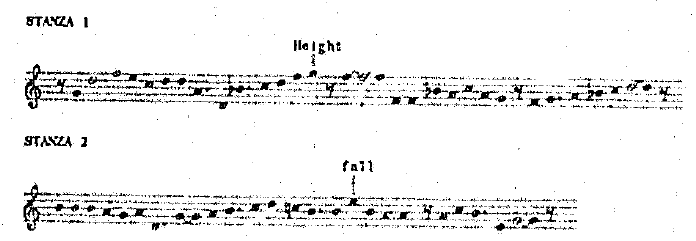 (Van der Watt, 114)
(Van der Watt, 114)
Climaxes
"The two vocal climaxes are given below:"
Bar no. |
Pitch |
Word |
3¹ |
G |
Height |
5¹⁴ |
E |
fall |
"The placing of a secondary climax on the word "fall" deserves some comment: it shows firstly that the composer does not automatically set individual words to music, literally, but that he mostly sets the idea in the closest possible vicinity to the thought, which is exactly the case here. He does not let the pitch fall on the word, but on the word immediately following "on", thus setting the idea. This is an important distinguishing feature of Finzi's compositional procedure."
(Van der Watt, 115)
Phrase lengths
"Each stanza completes a phrase and a breath should be taken at 2⁹ and 5⁶. Other instances of breathing are furnished with rests."
(Van der Watt, 115)
"The tonal construction is the most interesting aspect of the song. There are three [four] bitonal sections:"
Systems 1¹-2² |
Upper part in G major & lower part in G flat major |
|
Systems 4²-¹⁴ |
Upper part in G major & lower part in E flat major |
|
Systems 5¹² - 6⁵ |
Upper part in G major & lower part in E flat major |
|
Systems 7¹⁶-7²⁸ |
Upper part in G major & lower part in G flat major |
"The in-between sections are more stable tonally and the first is clearly in F major (s. 2² - 4¹) while the second and third are clearly in G major (s. 5¹-¹¹, 6⁶-7¹⁵). The right hand part [of the piano] stays more or less in G major from 4² to the end which is largely responsible for the sense of tonal coherence, even in more dissonant bitonal sections. Key changes in this song should be considered as transitions rather than modulations due to the absence of the leading notes [tones] of the new keys."
(Van der Watt, 115)
Chromaticism
"The bitonal sections have a strong chromatic effect. There are, however, other instances of chromaticism, such as the absence of an F sharp in systems 1⁶ and 7²⁰, the Major - Minor chord built on D (s. 4⁶), the raised fifth of the tonic chord in system 5¹² and the G sharp (s.7¹⁴) which should really be A flat (anticipating the G flat major in the lower part). Only one of these examples can be directly linked to the text, namely system 5¹² with the word "shine", in the thought context of "strange swift shine"; the dissonance reinforces the strangeness of the light."
(Van der Watt, 115)
HARMONY AND COUNTERPOINT
"A seventh is frequently added to the triad and this is very prominent in system 6¹²-¹⁸ (I₇ - IV₇ - I₇ - IV₇ - I⁴₃ - IV⁶₅ - V₇). Chord ii⁹ (s. 2⁵) is used on the word "far" harmonically reinforcing the meaning. The use of chords in second inversion becomes a feature of the song and is used in succession (s. 6⁶-¹¹) with the final line of text, "On that sweet form of thine". The downward movement to the lowest piano pitch used, underlines the finiteness of those who are earthbound."
(Van der Watt, 115-6)
Non-harmonic tones
"Non-harmonic tones play their usual role of creating movement and numerous accented examples provide dissonance which enhances the strangeness of the comet's light."
(Van der Watt, 116)
Harmonic devices
"There is only one real inverted pedal point (s. 6¹⁴- ¹⁷(B)), possibly symbolizing the last thought on human existence before all attention is again directed towards the comet. The Major-Minor chord (s. 4⁶) has already been mentioned."
(Van der Watt, 116)
Counterpoint
"The piano accompaniment largely consists of two, three and four-part free counterpoint. The only section which tends to be imitative, without being strictly so, is found in systems 2⁶-3¹¹. The fairly extensive bitonal sections result in "accidental" dissonance which serves the atmosphere of strangeness well."
(Van der Watt, 116)
"Loudness variation is given in the following summary:"
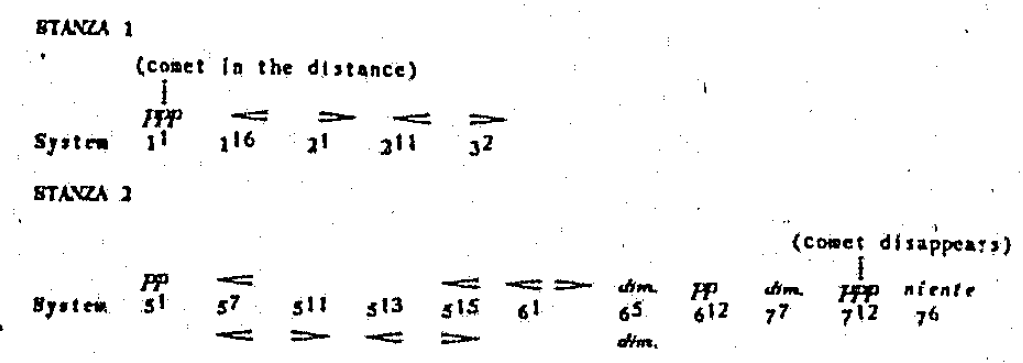
(Van der Watt, 116)
FREQUENCY
"There are 15 indications in the roughly 30 projected common time bars. Dynamic indications are sparsely used due to the delicate nature of the suggested atmosphere. There are a number of separate indications for the voice."
(Van der Watt, 116)
RANGE
"The dynamic range is extremely small, a ppp indication being the lowest level and pp the highest."
(Van der Watt, 116)
VARIETY
"The indications used are:"

(Van der Watt, 116)
"These are appropriate in the specific context and help to create the delicate, distant atmosphere that the composer intended."
(Van der Watt, 116)
DYNAMIC ACCENTS
"There are only a small number of portamento accents: systems 3³, 3⁷, 4¹², 4¹³, 7⁶. These simply highlight certain pitches, many of which are sustained notes, the slight accent allowing them to sound for the full duration at the slow tempo."
(Van der Watt, 117)
"The density varies loosely between two and five parts including both piano and voice. The thickness of the piano part is represented in the following table:"
No. of parts |
No. of beats |
Percentage |
2 parts |
25 |
21 |
3 parts |
43 |
37 |
4 parts |
49 |
42 |
"The two-part texture coincides with the bitonal sections in the prelude and postlude and the thin texture reinforces the idea of the distance of the comet. A four- and three-part texture dominates in the rest of the song, coinciding with the warmer atmosphere created in the middle of the song."
(Van der Watt, 117)
"The structure of the song can be represented in the following table:"
 (Van der Watt, 117)
(Van der Watt, 117) "The song is vocally through-composed, but the piano part follows a three-part structure, with the opening material returning conspicuously in two places towards the end of the song (s. 6¹⁰-¹⁸ & 7¹⁰-²⁸)."
(Van der Watt, 117)
7. Mood and atmosphere
"The atmosphere is delicate cold and a little strange at the beginning and end of the song. As the accompaniment gradually drops down to middle range the atmosphere becomes warmer and more familiar. The mood turns sombre in the sixth system when the persona is confronted with his own and his beloved's finiteness. The gradual shift of atmosphere follows the text carefully: the comet is seen and followed, thoughts turn to self-examination and the attention is shifted back to the comet."
(Van der Watt, 117)
General comment on style
"The vocal writing is sympathetic with 75% smaller intervals. The use of bitonality is successful in the setting of the atmosphere. The practice of not indicating a time-signature has the advantage of creating a kind of metric limbo which enhances the idea of being "lost" in the immensity of space. The gradual shift of atmosphere (comet-man-comet) is meticulous in following the text."
(Van der Watt, 117)
Unpublished Analysis Excerpts
The following is an analysis of The Comet at Yell'ham by Mark Carlisle. Dr. Carlisle extended permission to post this excerpt from his dissertation on September 7th, 2010. His dissertation dated December 1991, is entitled:
Gerald Finzi: A Performance Analysis of A Young Man's Exhortation and Till Earth Outwears, Two Works for High Voice and Piano to Poems by Thomas Hardy
This excerpt begins on page one hundred twenty-five and concludes on page one hundred thirty-two of the dissertation.
Comments on the Poem
"Yellowham, or Yell'ham Wood, is a small copse by Yell'ham Hill, about three miles from Dorchester, and less than half a mile from Hardy's boyhood home. It was here that Hardy saw Encke's Comet, visible in England in the fall of 1858. Hardy wrote in a letter to Dr. T. Herbert Warren in 1909, "I have read the proof of your interesting and able address at the celebration of the Jubilee of the Oxford Museum, and a much honored by your quoting my little poem about the comet. It appeared, I think, in 1858 or 1859-a very large one-and I remember standing and looking at it as described.""
(Carlisle, 125)
"There are several theories regarding the identity of the "sweet form" the poet mentions in this poem. As Hardy would have been only seventeen or eighteen years old when the comet passed, it seems reasonable that he was speaking either of a childhood sweetheart or of his own mother or sister. The poet is addressing a loved one, but referring to a time after her death, much as he has in "Her Temple." It is clear that the knowledge of human mortality continued to occupy not only the "young man's thoughts, but those of Finzi as well, as the cycle progressed."
(Carlisle, 125)
Comments on the Music
"Finzi's musical setting of this poem is certainly among the more unusual and sophisticated of any in this cycle. It contains a harmonic structure that is often more advanced than normally heard in Finzi's songs, and as importantly is composed with no bar lines from beginning to end in the same manner as 'At a Lunar Eclipse' from the set, Till Earth Outwears. There are seven systems, each of which will be used as a reference point for discussing this song. Although Finzi was to compose other ametrical songs, including the next one in this cycle, it was nevertheless a very uncommon approach to take in song writing at the time."
(Carlisle, 126)
"Finzi indicated no specific key signature, and incorporated harmonic dissonances that are often quite striking. Although it is obviously through-composed, it is nevertheless divided into two clear sections that correspond to the two stanzas. It is a song that in its entirety clearly stands apart from most others written by Finzi, as it seeks to musically relate the youthful wonder and profoundness of a heavenly comet to earthly mortality."
(Carlisle, 126)
"The first section of the piece begins with a passage for piano alone, characterized by bitonality: the top line is in D Aeolian (natural minor), while the bottom line, up until the vocal entry, is ambiguously in either E flat Aeolian or A flat Dorian. This bitonality, shown in the example below, reflects the conflict within the poet as he ponders the dichotomy of the comet's seemingly infinite existence versus the very finite existence of mankind."
(Carlisle, 126)
"Example 16. 'The Comet at Yell'ham,' before 'It bends far over Yell'ham Plain.'"(Carlisle, 127) |

"The bitonality continues into the second system before merging into D natural minor in both hands of the accompaniment shortly after the entrance of the vocal line. The key of D assumes complete dominance for the remainder of the second and all of the third systems. The most important and interesting element of both the second and third systems is that of texture. The opening text, 'It bends far over Yell'ham Plain,' gives rise to a four-voiced contrapuntal texture that 'bends and weaves' as a reflection of the comet's movements in contrast to the slower motions in the voice. It is a wonderful reflection of the tranquillity found when quietly watching from a favorite spot the 'fiery train of a comet' passing into and out of human sight."
(Carlisle, 127)
"The music maintains this serene quality until the beginning of the fourth system when a harmonic change on the second beat signals a break from the previously established tonality. This change corresponds tot he text, 'So soon to swim from sight,' highlighting the young man's sense of disappointment as such a youthfully important moment comes to its inevitable but undesired conclusion. The chord underneath the word 'sight' in the fourth system is a highly expressive seventh chord (an augmented triad with a major seventh), which is reached by a return to the opening's bitonality: the left hand is now in A flat Lydian in contrast to the right hand's switch to G major/minor. Once again dissonance due to bitonality becomes the dominant element as the first section comes to a close at the end of the fourth system."
(Carlisle, 128)
"A return of motivical elements heard in the accompaniment at the beginning is evident in the fourth system. The right hand of the accompaniment, beginning with the second beat, melodically reiterates an altered version of the opening motive, this time emphasizing G minor. This reiteration provides a cohesiveness to the music that is very important, in light of the lack of any substantive harmonic direction. This fourth system consists primarily of the accompaniment moving in chromatic, three-voice counterpoint to a concluding chord that can be analyzed as V of G in the right hand, which is the same a I of D found at the beginning. It seems certain Finzi recognized at the end of this poetic stanza an underlying sense of disappointment and uncertainty, and echoed those sentiments in the ambiguity of bitonality and bimodality (G major/minor)."
(Carlisle, 128)
"The second section begins with the fifth system in a clear G major lasting until the word 'swift' and providing momentary relief from the substantial dissonance of the fourth system. Contrapuntal textures remain throughout the rest of the song, but to a lesser degree than in the second and third systems. Homophonic chordal movement with some brief counterpoint in one or perhaps two voices becomes much more common, until a return in imitative fashion of the opening counterpoint is heard at the end of the final system. harmonic dissonance reappears in the fifth system underneath the word 'shine,' within the more complete poetic context of the concluding sentence, 'It will return long years hence, when As now its strange swift shine Will fall on Yell'ham; but not the On that sweet form of thine.' This dissonance extends from the word 'shine' through a resolution back to G major underneath the word 'thine' in the sixth system, once again containing light overtones of bitonality that reflect the emotional discord of mortality."
(Carlisle, 128-9)
"The melody during this short time remains quite consistent, moving within the span of no more than an octave, and often within the shorter span of a fifth. It is placid in character, as for the most part it has been throughout the song, allowing harmonic factors greater influence on the overall temperament of the song. however, it should be noted here that even though the harmonic structure of this passage creates some moderate dissonance, the melody itself remains firmly entrenched in G major through the conclusion of the vocal line in the sixth system. This substantially softens and mitigates the underlying dissonance, creating an overall effect of muted disillusionment rather than overt anger over the seeming futility of life."
(Carlisle, 129)
"The accompaniment continues with a postlude through the rest of systems six and seven. This postlude begins quietly in the key of G major, moving in mostly two or three voice counterpoint in ascending fashion throughout the remainder of the song. Very subtle melodic and rhythmical references to earlier material can be heard in the right hand of the accompaniment from the middle of system six to the middle of system seven but only beginning in the middle of the seventh does one hear a clear return of the opening motivic material. the music returns at this point in almost exact replication of the passage from beat six of the first system through beat two of the second system."
(Carlisle, 130)
"The most striking element of the song is an arc produced by the registration of the piano accompaniment. The registration begins quite high and ascends nearly tot he top of the keyboard as the voice enters, then gradually descends in both hands through the last word of text. The accompaniment then gradually climbs throughout the postlude to drift off into the distance at the top of the keyboard. The placement of motivic material at the opening and closing, along with the registration arc of the accompaniment, combine to create a musical reflection of the comet's flight from horizon to horizon."
(Carlisle, 130)
Comments about Performance
"This piece requires little more of the performer than simply to follow the musical markings incorporated by Finzi. The opening tempo of [quarter note] = c. 42 (Lento) is quite satisfactory, bolstered by the previously mentioned moto sostenuto e legato. The rallentando at the end of system three, the a tempo at the beginning of system four, and the ritardando-niente at the end of the piece all make sound musical sense, and should be carefully observed. Dynamic markings are for the most part simply gradations of piano, which suits the quiet intensity and sadness of the poetry. The singer need not use any unusually dramatic dynamic variations within this song; his primary responsibility is to vocally portray the plaintive quality of the text. Anything more is superfluous and potentially harmful to the intended character of both music and poetry."
(Carlisle, 130-1)
"This piece presents few if any technical problems for the singer. In fact, from a purely vocal standpoint, it is probably the easiest song in this cycle. The poetry, for all of its inherent complexity, is not unusually difficult to interpret if the performer possesses a basic sensitivity to text communication. The most difficult aspect would probably be found in the accompaniment, so someone of more than average musical expressiveness would be required to meet its artistic needs. While few if any songs by Finzi lend themselves easily to the youngest of collegiate students, it would not be out of place to consider this song in the repertoire of a junior level student with above average musical sensitivity and awareness."
(Carlisle, 131)
"The only essential requirement for this song is that both singer and accompanist bring to a performance approximately the same level of musical understanding. Any substantial differences between the two would serve to greatly diminish the possibility of an artistic performance. This song needs a stronger unity of purpose than do some others to be effective, but can be very rewarding for any who honestly attempt to seek out its unique and at times disturbing qualities."
(Carlisle, 131-2)
Unpublished Analysis Excerpts
The following is an analysis of The Comet at Yell'ham by Leslie Alan Denning. Dr. Denning extended permission to post this excerpt from his dissertation on September 8th, 2010. His dissertation dated May 1995, is entitled:
A Discussion and Analysis of Songs for the Tenor Voice Composed by Gerald Finzi with Texts by Thomas Hardy
This excerpt begins on page sixty-one and concludes on page sixty-three of the dissertation.
""The Comet at Yell'ham" brings a dramatic end to the first half of Finzi's cycle and contains subject matter close to both Hardy and Finzi, namely the passing of time and man's relationship with the universe. This text shows Hardy as more resolved and accepting of his role in the vast scheme of things. "The Comet at Yell'ham" appeared in the August 1901 collection Poems of the Past and Present, but appeared in earlier editions titled The comet at Yalbury or Yell'ham. Poems of the Past and Present contains verse previously printed in The Times Morning Post, Daily Chronicle, Westminster Gazette, Literature, Graphic, Cornhill and Spear. Hardy thought of this collection as primarily personative, depicting characters in a play. In his preface to this volume he gives some illuminating thoughts about the world and the life process.
(Denning, 61-2)
Unadjusted impressions have their value, and the road to true philosophy of life seems to lie in humbly recording diverse reading of its phenomena as they are forced upon us by chance and change." (Hardy, 84) (Denning, 62) |
"The poem itself seems slight enough, but Hardy's deceptive simplicity obviously challenged the composer. Finzi's response, 'The Comet at Yell'ham,' reveals some of Finzi's best writing and indeed, his treatment of the poem makes it more significant. The composer's imagination seems more vivid in this piece and shows a determination to break away form his traditional harmonic devices. The result is a song more harmonically experimental that almost anything else the composer wrote and it is written without bar lines. The effect is atmospheric, setting our human life in perspective though without sitting in judgement. The bi-tonal opening invokes the image of the vast impersonal space from which the comet moves (musical Example 9)."
(Denning, 62-3)
"Example 9: The Comet at Yell'ham, Opening." (Denning, 63) |

"It is interesting that Finzi has chosen for the comet to move lento rather than fast. This portrays the character puzzling over an image of nature and its contrast to humanity: the cold isolation of the comet compared with the thought of those who watch it. The spare counterpoint introduces the words of the unbarred song which contains more traditional harmony than the opening, but with some obvious dissonances for word emphasis that are uncommon for Finzi. Finzi has chose not to depict the sight of the comet itself, only the pondering train of though suggested by it. After the words have been sung there is no comment and the universe is unchanged. The remoteness of the introduction returns and the accompaniment meanders up and away with the comet until it disappears."
(Denning, 63)
Unpublished Analysis Excerpts
The following is an analysis of The Comet at Yell'ham by Carl Stanton Rogers. Permission to post this excerpt was extended by Dr. Rogers' widow, Mrs. Carl Rogers on March 1st, 2011. Dr. Rogers' thesis dated August 1960, is entitled:
A Stylistic Analysis of A Young Man's Exhortation, Opus 14, by Gerald Finzi to words by Thomas Hardy
This excerpt begins on page thirty-eight and concludes on page forty-three of the thesis. (Rogers, 38-43)
Part I, Number 5
"The Comet at Yell'ham"
The general character of this song hinges on the observations that:
(a) The text setting is syllabic throughout.
(b) The song is through-composed; it consists of two stanzas; therefore, its form is A B.
(c) Bar lines and the intent of the meter signature are abandoned throughout the entire song.
Upon examining the vocal line of this song, it becomes clear that the poetry has been allowed to determine the architecture of the melody completely. In order to gain a better view of this architecture, Section A of the melody has been shown in graph form in Figure 17. The first stanzas of the poetry, the melody of which is shown on the graph, is given below:
It bends far over Yell'ham Plain,
And we, from Yell'ham Height,
Stand and regard its fiery train,
So soon to swim from sight.
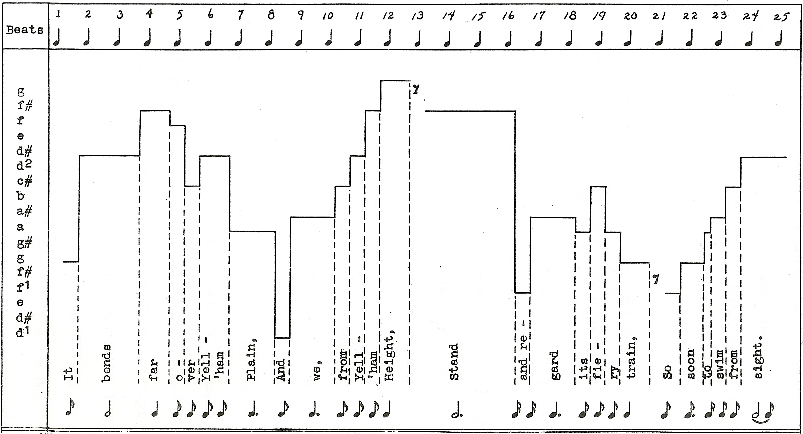
Fig. 17 -- "The Comet at Yell'ham," melodic graph of the vocal line of Section A.
The melody of the first line, "It bends far over Yell'ham Plain," conveys the feeling of seeing the rise and fall of the comet as it comes into view. With the beats marked off on the graph, it can be seen that this first line extends from the last half of beat one through the first half of beat eight. The gradual ascent of the melody to the word "Height" at the end of the second line is particularly noticeable on the graph. The second line extends from the last half of beat eight through beat twelve. On the word "Stand" at the beginning of the third line, the melody itself comes to a standstill (beat thirteen through the first half of beat sixteen). The remainder of the third line, "and regard its fiery train," again depicts the rise and fall of the comet, which is shown on the graph as extending from the last half of beat sixteen through beat twenty. On the words of the last line, "So soon to swim from sight," the melodic line rises and does not fall again, as though the comet is seen to pass out of sight. This fourth line extends from the last half of beat twenty-one through the first half of beat twenty-five. Taking the melody as a whole, it is evident that it does have a rather uniform rise and fall which enhances the mood of the stanza.
The song is chiefly contrapuntal, and the devices used by the composer here can best be shown by the recognition of two principal themes, both of which are stated at the beginning of the song in the piano accompaniment. These two themes are shown in Figure 18.

Fig. 18 -- "The Comet at Yell'ham," first appearance of two principal themes.
The theme which appears in the upper voice of the accompaniment will be called the first theme, and the theme which appears in the lower voice of the accompaniment will be called the second theme. The two themes taken together help to create the eerie and unearthly mood of the poem. This mood is also enhanced by the use of similar rhythmic motives appearing in different voices of the accompaniment. This mood is also enhanced by the use of similar rhythmic motives appearing in different voices of the accompaniment. This point is illustrated in Figure 19.
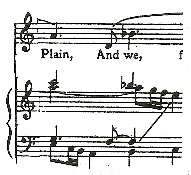
Fig. 19 -- "The Comet at Yell'ham," similar rhythmic motives in accompaniment.
The first theme again makes its appearance at the conclusion of the song in the upper voice of the accompaniment. The second theme appears again also in the lower voice of the accompaniment; however, this time it is in retrograde form. This reappearance of the principal themes is shown in Figure 20.
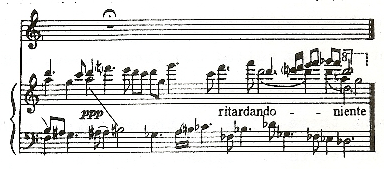
Fig. 20 -- "The Comet at Yell'ham," reappearance of two principal themes.
The first line of the second stanza of the poetry says of the comet that "It will return long years hence," and the statement of the two principal themes both at the beginning and at the end of the song can be called an attempt to represent musically the return of the comet.
The preceding was an analysis of The Comet at Yell'ham by Carl Stanton Rogers. Permission to post this excerpt was extended by Dr. Rogers' widow, Mrs. Carl Rogers on March 1st, 2011. Dr. Rogers' thesis dated August 1960, is entitled:
A Stylistic Analysis of A Young Man's Exhortation, Opus 14, by Gerald Finzi to words by Thomas HardyThis excerpt began on page thirty-eight and concluded on page forty-three of the thesis.
Unpublished Analysis Excerpts
The following is an analysis of The Comet at Yell'ham by Michael R. Bray. Dr. Bray extended permission to post this excerpt from his thesis on March 19th, 2011. His thesis dated May 1975, is entitled:
An Analysis of Gerald Finzi's "A Young Man's Exhortation"
This excerpt begins on page thirty-five and concludes on page forty of the thesis.
(Bray, 35-40)
THE COMET AT YELL'HAM
|
||
|---|---|---|
IT bends far over Yell’ham Plain, |
||
|
||
Stand and regard its fiery train, |
||
|
||
It will return long years hence, when |
||
|
||
Will fall on Yell’ham; but not then |
||
|
||
"The Comet at Yell'ham" is based on an actual experience. When Dr. T. Herbert Warren quoted the poem in a speech, Hardy wrote to him on October 24, 1909: "I have read the proof of your interesting and able address at the celebration of the Oxford Museum, and am much honored by your quoting my little poem about the comet. It appeared, I think, in 1858 or 1859 - a very large one - and I remember standing and looking at it as described." (Hardy) The comet was Encke's Comet, brilliant in England in September and October, 1858. According to the poem, Hardy watched the comet from the top of Yellowham Hill. Yellowham (Yell'ham) Wood is an old wood chiefly of firs, pines, and beeches on the sides and top of Yellowham Hill, about three miles northeast of Dorchester and a half mile from Hardy's boyhood home. (Bailey, 44) The "sweet" form who was with him may have been his mother, sister, or even a childhood sweetheart.
The poem, in comparing the comet's return "long years hence" with the brevity or passing of human life, suggests a theme "to set the emotional history of two infinitesimal lives against the stupendous background of the stellar universe." (Bailey, 168)
If a melodic curve could be imposed on "Comet at Yell'ham," it would start in strangest remotest space, feel the pull of humanity, slowly gain momentum, enter into the warmest and most humble open arms, recall its distinctive uniqueness and separateness, and slowly drift back to the remotest home in outer space. In reality, this is the very profound personal effect Encke's comet had on Thomas Hardy in 1858. "the Comet at Yell'ham" is regarded, and understandably so, as the height of perfection in Finzi's songs. The effects and flawless unity he achieved were the result of years of refined technique.
The accompaniment begins in the eerie reaches of the high register and introduces a dotted quarter-eighth-note and a two sixteenth-note motif that play a major role in unifying the song. Both hands in the accompaniment are very
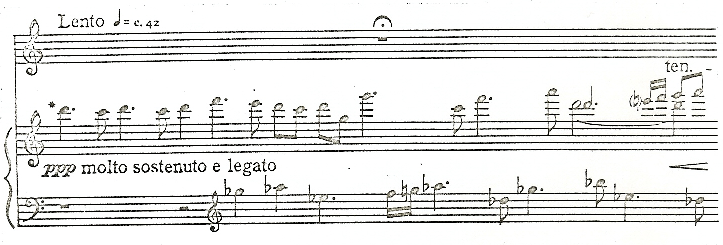
EXAMPLE 12: "The Comet at Yell'ham" measures (First Score).
disjunct containing many leaps of a fourth, a fifth and octaves - the "open" intervals. In addition to the musical line itself, the lento [quarter-note] = c. 42 and triple piano markings add to the desired mood. There are no bar lines or key signatures to interrupt the smooth continuous transitions.
The rhythmic motifs continue as the first phrase describing the bending of the comet returns the sixteenth-note figures. However, when the poem begins to reflect on those human observers present, the motifs fade and are replaced by straighter eighth-note movement sounding in chords that now take definite shape. With delicate subtlety, an occasional single motif or reminiscent leap appear as if to remind us of the comets' presence. The motion then slows to a stop after the full effect of the comet has been felt. A characteristic change in text and accompaniment now begin the return of the comet to its beginnings.
The harmony thus far has been quite nonfunctional in the musical setting of the poetry. The poetry here takes an introspective turn and reflects on the passage of time. In

EXAMPLE 13: "The Comet at Yell'ham" measure (Fifth Score).
compliance, the harmony becomes "sweet" and recalls the lushness found in seventh chords of "Her Temple." The text, at first impersonal in description of the comet and then warming up to the humanistic drama, now becomes personal to the extent of mentioning "that sweet form."
In similar fashion, the accompaniment, has undergone transitions. Again characteristic of Finzi's climaxes, the bass line descends and resounds in the richness of seventh chords corresponding to the point of the poetic line.
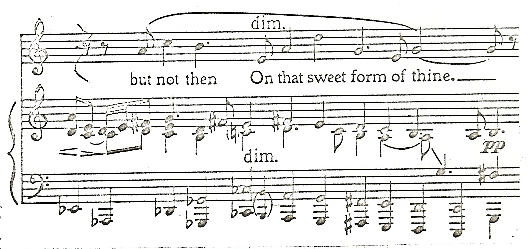
EXAMPLE 14: "The Comet at Yell'ham" measure (Sixth Score).
The ascension of the musical thought is indeed a miracle. In but a few chords hence, the syncopation and leaps characteristic of the comet are sparingly reintroduced. The transition back to the "comet" theme is unnoticeably smooth. This repeating theme completes the return of the comet.
The vocal line, with the wide range of an eleventh, is text painting at its best. The phrase "It bends far over Yell'ham Plain," literally bends within the arched phrase.

EXAMPLE 15: "The Comet at Yell'ham" measure (Second Score).
Yell'ham Height is pictured aptly as "Height" is set on the highest note in the song. The idea of standing on that hill is also clearly depicted as the word is held on the longest note of the song. The strangeness of the "strange swift shine" appears quite obvious in the D# E# G cluster that accompanies the phrase. There are no wasted words or unnecessary inflections. The shape of the song, the poem, and the accompaniment are one together.
The preceding was an analysis of The Comet at Yell'ham by Michael R. Bray. Dr. Bray extended permission to post this excerpt from his thesis on March 19th, 2011. His thesis dated May 1975, is entitled:
An Analysis of Gerald Finzi's "A Young Man's Exhortation"
This excerpt began on page thirty-five and concluded on page forty of the thesis.
(Bray, 35-40)
Unpublished Analysis Excerpts
The following is an analysis of The Comet at Yell'ham by John Keston. Mr. Keston extended permission to post this excerpt from his thesis on September 30th, 2011. His thesis dated May 1981, is entitled:
Two Gentlemen from Wessex: The relationship of Thomas Hardy’s poetry to Gerald Finzi’s music.
This excerpt begins on page seventy-seven and concludes on page eighty-one of the thesis. To view Mr. Keston's Methodology please refer to: Methodology - Keston.
THE COMET AT YELL'HAM
|
||
|---|---|---|
IT bends far over Yell’ham Plain, |
||
|
||
Stand and regard its fiery train, |
||
|
||
It will return long years hence, when |
||
|
||
Will fall on Yell’ham; but not then |
||
|
||
IT WILL RETURN
The following quotation form Bailey explains more comprehensively the event which elicited Hardy's romanticism in this poem.
The poem, in comparing the comet's return 'long years hence' with the brevity of human life, suggests a theme of Two on a Tower, Hardy's wish 'to set the emotional history of two infinitesimal lives against the stupendous background of the stellar universe.' Looking at both the novel and the line 'It will return long years hence,' Weber says: 'For fictional purposes. . . Hardy transferred to Encke's Comet the characteristics of the comet he had seen on June 25, 1881. We now know this comet as Tebbutt's. . . Of course no one then knew its name, for no one then living had seen it before. The last time it had been visible was in 547 B.C.. . . It will not be back until A.D. 4309.' (Bailey, 168)
The preceding was an analysis of The Comet at Yell'ham by John Keston. Mr. Keston extended permission to post this excerpt from his thesis on September 30th, 2011. His thesis dated May 1981, is entitled:
Two Gentlemen from Wessex: The relationship of Thomas Hardy’s poetry to Gerald Finzi’s music.
This excerpt began on page seventy-seven and concluded on page eighty-one of the thesis.

